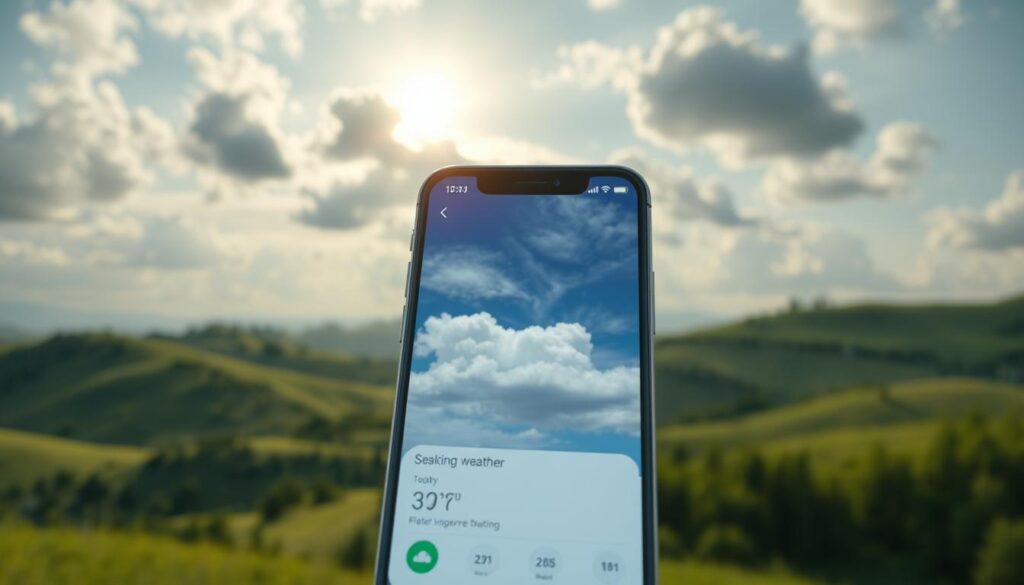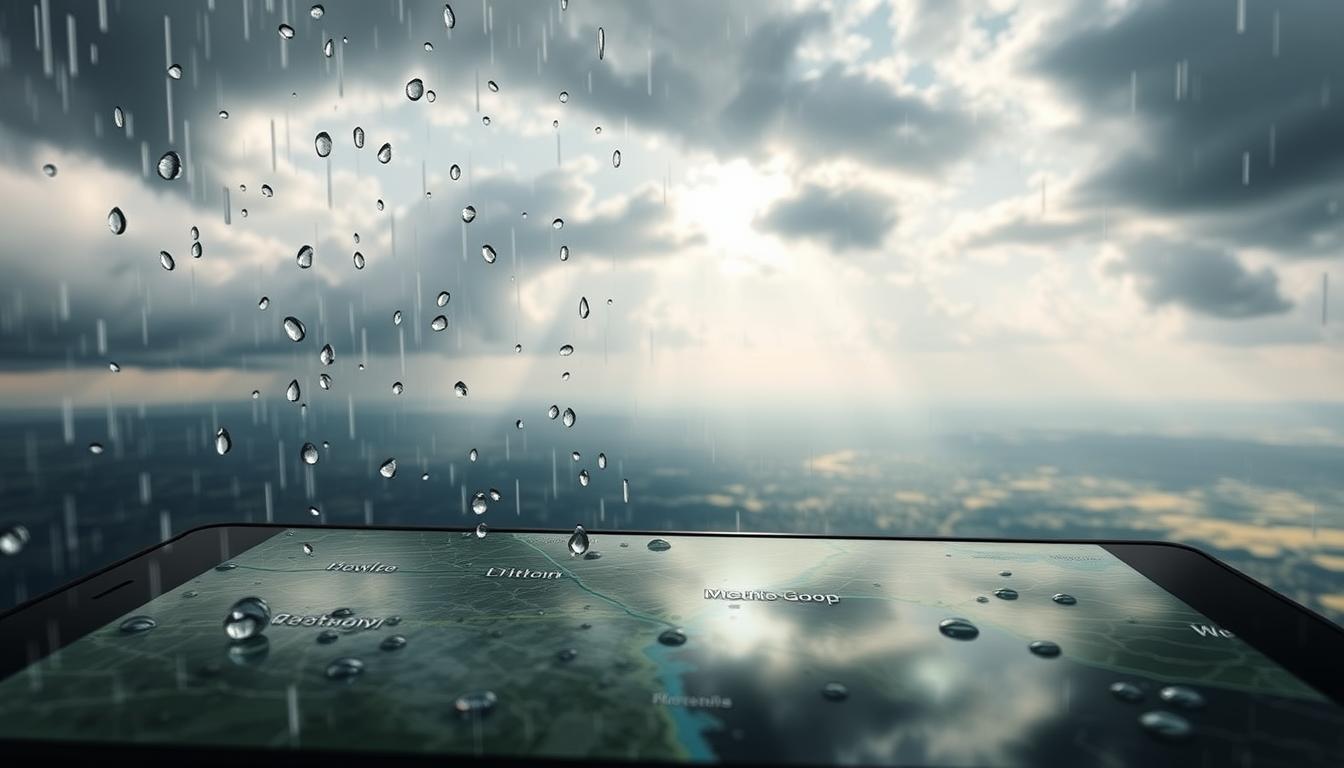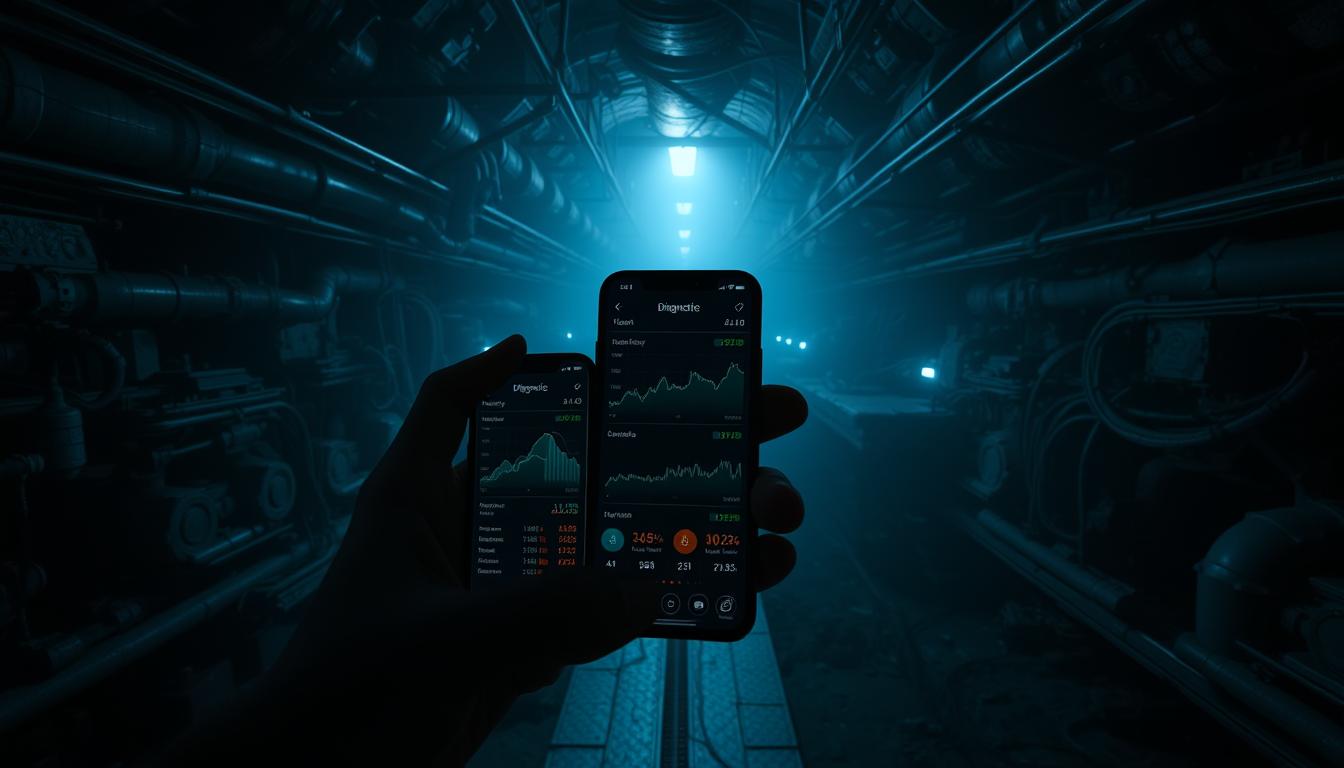Can the weather really make or break your experience in mobile maps? With procedural weather cycles, creating an immersive experience is now possible. Perfect weather synchronization is key to better gameplay and navigation.
Understanding how to blend weather patterns is crucial. This article will explore new solutions and advanced algorithms. They aim to make mobile maps more realistic by syncing weather perfectly.
Introduction to Procedural Weather Cycles
Procedural weather cycles are key in making mobile apps more engaging. They use algorithms to mimic different weather patterns. This makes the environment change as players interact with it.
Developers can create unique atmospheres through procedural generation. This improves the game experience and keeps users interested.
It’s important for developers to understand weather systems well. Studies show that good procedural weather systems make games feel more real. As players explore, the changing weather adds to the story, making the game world feel more alive.

Importance of Weather Synchronization in Mobile Maps
Weather synchronization is key in making mobile maps interactive and realistic. It helps users feel like they’re really there, making navigation more believable. When weather is shown accurately, it makes the experience more engaging and real.
Studies show that matching weather with the map’s features improves navigation and memory. Users can better keep their bearings in changing weather. This connection makes mobile maps more meaningful and important.

In short, weather synchronization is more than just looks. It makes mobile maps functional and fun, enhancing the user’s experience.
Understanding Procedural Generation in Mapping
Procedural generation is key in mapping tech. It lets developers make big, varied landscapes with smart algorithms. This way, they don’t have to create everything by hand. It makes designing huge virtual worlds easy and fun.
This tech opens up new ways to tell stories in games. It lets weather and landscapes change together, making games feel more real. Players get to explore worlds that change with the weather, making the game feel more alive.
Creators use mapping tech to make weather systems that look great and work well in games. They can make rain, sun, and snow that looks good and affects the game world. Knowing how to use these systems can make games better for players.
To learn more about making weather work in procedural maps, check out this resource. Mixing procedural generation with smart algorithms is a new area for game developers. It’s exciting for making games better.
Key Components of Weather Cycle Systems
Creating a dynamic weather cycle system needs several key parts working together. Temperature and humidity are crucial for the environment users see. They shape the weather, making mobile maps more realistic.
Geographical features add complexity to the systems. For instance, mountains and coasts have different weather. This variety makes the experience more engaging and immersive.
It’s important to balance predictable and random weather. Users enjoy seeing familiar weather but also like surprises. Knowing how much information is too much is key. This balance keeps the experience fun and easy to handle.
| Component | Description | Impact on User Experience |
|---|---|---|
| Temperature | The degree of heat present in the environment. | Affects visibility and navigation strategies. |
| Humidity | Amount of moisture in the air. | Impacts weather perception and realism. |
| Geographical Features | Natural landscapes like mountains, rivers, and valleys. | Contributes to diverse weather behavior and challenges. |
| Predictability | Consistency of weather conditions over time. | Helps users adapt and devise navigation strategies. |
| Randomness | Unexpected weather changes. | Creates excitement and encourages exploration. |
Perfect Synchronization of Procedural Weather Cycles
To get perfect synchronization of procedural weather cycles, we need a detailed plan. Good strategies are key to match dynamic weather with mobile navigation. This makes sure players see weather changes that feel real as they move around.
Procedural weather effects make mobile maps more real. Weather like rain, snow, or fog can really make the experience better. It’s important to test and improve these weather patterns to keep the game fun and easy to navigate.
Getting feedback from users helps developers find the best ways to sync weather and movement. For example, using machine learning to study how players react to weather can be very helpful. This way, developers can keep making the weather in the game more realistic and fun.
Mastering the sync of procedural weather cycles makes games better and easier to navigate. Knowing what players like helps create more exciting and immersive mobile apps. This connection makes the digital world feel more real and engaging for players.
Techniques for Implementing Weather Synchronization
To make procedural mobile maps feel real, you need advanced techniques and algorithms. These help developers build a strong system that shows weather like it really is. They use math to mimic weather patterns, making the environment feel true to life.
Data modeling is key here. It lets developers add real weather data to make the visuals more believable. This means they can update the weather to match what’s happening outside, keeping the simulation fresh.
- Algorithmic Solutions: Developers use special algorithms for different weather effects, like rain or fog.
- Data-Driven Models: Using current weather data, maps can change with the weather in real time.
- Real-Time Processing: Techniques that use data as it comes help weather changes look smooth and natural.
Using these methods makes maps more fun and lifelike. Each approach helps make the maps feel more real, which makes users happy and engaged.
Integration of Landmarks and Navigation
Landmarks are key in making navigation systems better. They serve as important points of reference, helping users find their way. By using well-known landmarks, users can easily figure out directions and where they are on a map.
This makes navigation faster and more straightforward. It makes the whole process smoother and easier to understand.
Studies show that landmarks help improve spatial memory. When landmarks are shown clearly on maps, it helps users navigate better. By interacting with landmarks often, users become more confident in their navigation skills.
A good mapping system should highlight these landmarks. This way, users get a better navigation experience. They can rely on recognizable landmarks to help them navigate.
Effects of Cognitive Load on Navigation and Weather Synchronization
Cognitive load greatly affects how well we navigate on mobile devices, especially when the weather changes. When a user interface is too busy, it makes navigation harder. This is especially true when trying to use a map with weather information.
Designers can make mobile maps better by focusing on what’s important. They can reduce clutter and make the design easy to use. This helps users navigate without getting lost in too much information.
By making UI changes, designers can make maps easier to use, even in bad weather. Thinking about cognitive load helps make maps better for everyone. It makes using maps a more enjoyable experience.
Utilizing Virtual Reality for Navigation Testing
Virtual reality (VR) is changing the game in navigation testing. It creates immersive environments where developers can test different weather and navigation challenges. Users get to experience these tests in real-time, which helps them understand navigation systems better.
VR offers precise control over weather patterns. Developers can tweak conditions to see how they affect navigation. This helps in designing better systems, making the user experience better.
| Feature | Benefits of Using VR |
|---|---|
| Real-Time Simulation | Enables immediate feedback on navigation designs |
| Immersive Environments | Enhances user engagement and experience |
| Controlled Testing Conditions | Facilitates detailed analysis of weather impacts |
| Increased Spatial Awareness | Improves understanding of navigation challenges |
Using virtual reality in navigation testing makes the development process smoother. It leads to more reliable navigation systems. The immersive nature of these environments allows for real-time exploration of different variables.
Measuring Success in Weather Synchronization
Measuring the success of weather synchronization in mobile maps is key. It involves performance metrics, user feedback, and how well the weather syncs. These elements help developers see if their systems meet user needs.
Performance metrics give numbers on how the app does. Things like how often users come back and how well they navigate are important. These numbers show if users stick with the app and if they can find their way in changing weather.
User feedback adds a personal touch to the review process. By listening to what users say, developers get a better idea of what works and what doesn’t. Surveys and app reviews help gather this feedback, giving a clearer view of the app’s strengths and weaknesses.
To make sense of all this, developers can create a detailed analysis. Here’s an example:
| Performance Metrics | User Feedback Rating (1-5) | Synchronization Evaluation (Effective/Not Effective) |
|---|---|---|
| User Retention Rate | 4.2 | Effective |
| Navigation Accuracy | 3.8 | Effective |
| Overall Satisfaction | 4.0 | Effective |
By combining performance metrics and user feedback, developers get a complete picture. This helps them make better choices to improve the app. With careful measurement and analysis, they can make sure users have a smooth experience, no matter the weather.
Challenges and Solutions in Weather Cycle Synchronization Implementation
Implementing weather cycle synchronization in mobile maps comes with many challenges. One big issue is simplifying weather too much. This can make the weather patterns seem unrealistic and not engaging for users. Also, ignoring the environment can make the simulation less believable, causing a gap between what users expect and what they get.
To solve these problems, making the algorithms more complex is key. Adding more weather variables can make the simulations more detailed and realistic. Getting feedback from users helps improve the design, making it better match what users want and expect.
It’s important to follow best practices when syncing weather cycles. Testing the system under different conditions helps find its weak spots. Making changes based on user feedback can make the simulation even better. Using advanced design and listening to users can greatly improve the experience of using mobile maps.
| Implementation Challenges | Proposed Solutions | Best Practices |
|---|---|---|
| Oversimplification of Weather Variables | Enhance algorithmic complexity to include diverse parameters | Conduct comprehensive testing scenarios |
| Neglecting Environmental Influences | Incorporate user feedback to refine weather responses | Continuously adjust based on user interactions |
| Lack of Realism in User Experience | Utilize advanced simulation techniques | Implement iterative design improvements |
Future of Weather Synchronization in Mobile Maps
The world of weather in mobile maps is changing fast. New technologies and ideas are making weather forecasts more accurate and fun. This means better experiences for everyone using these maps.
Machine learning is becoming key in mapping. It helps make content that fits what you like. For example, you might get weather updates that really matter to you, based on where you are and what you like.
By combining new tech with maps, we get better at adapting to weather changes. This makes using maps smoother and more enjoyable. You’ll feel like you’re always up to date with the weather.
The possibilities for using weather in mobile maps are endless. With new tech and designs, the future of this technology looks bright. It could make navigating even better, thanks to real-time data.
Conclusion
Getting the weather right in mobile maps is key to making them better. When the weather matches the real world, users feel more connected. This makes the maps more fun and useful.
Weather that feels real helps users move around easily. As technology gets better, so will our maps. This means users will get to explore in a way that feels just like the real world.
As we all want better maps, making the weather perfect is crucial. This goal will make maps more exciting and lifelike. It’s a step towards making mobile maps the best they can be.
FAQ
What are procedural weather cycles?
Procedural weather cycles are how mobile maps create dynamic weather. They make the environment feel real by changing with what you do. This makes the experience more immersive.
Why is weather synchronization important in mobile maps?
Synchronizing weather keeps the map looking real and consistent. It makes the experience better by matching weather changes to real life. This is key for navigating and playing games.
How does procedural generation work in mapping technologies?
Procedural generation uses algorithms to create environments automatically. This means we can have realistic weather without needing to do it by hand. It opens up new ways to tell stories and play games.
What are the key components of weather cycle systems?
The main parts are temperature, humidity, and the landscape. These work together to make weather that feels real. A mix of predictability and surprise keeps users interested.
How can developers achieve perfect synchronization of weather cycles?
To get perfect sync, developers need to match weather with map logic. They must test and refine a lot to make the experience better and more useful.
What techniques are used to implement weather synchronization?
Developers use algorithms and real data to make weather look right. Algorithms create models, and data-driven models use real weather to update visuals.
How do landmarks improve navigation in mobile maps?
Landmarks help users find their way by acting as reference points. They make navigation easier by helping users learn their surroundings. This is key for a good user experience.
What is cognitive load in relation to navigation?
Cognitive load is the mental effort needed to navigate maps in changing weather. Knowing this helps designers make maps easier to use by delivering information clearly.
How does virtual reality benefit navigation system testing?
Virtual reality lets developers test navigation systems in a controlled space. It allows for precise weather simulation and testing of how users navigate.
How is the success of weather cycle synchronization measured?
Success is checked through user feedback and how well the system works. Important signs include how often users come back and how accurate they are at navigating.
What are common pitfalls in simulation design for weather cycles?
Mistakes include making weather too simple or ignoring the environment. To avoid this, add more complexity to algorithms and listen to feedback to make it more realistic.
What does the future hold for weather synchronization in mobile maps?
The future will bring more advanced tech like predictive models and machine learning. This will make weather systems more adaptable and responsive, improving the user experience with updates and personalized content.




